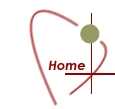Holter 24 Hour EKG Monitoring This is a procedure to record for 24
continuous hours of several leads of the EKG on an individual patient.
This is accomplished by attaching a miniature electronic tape recording
device with several lead wires attached to the patient's chest over
the heart.
Example
of 24 Hour Holter Monitoring Report (see figures 96-102)
An abbreviated copy of an actual report summary of a Jane Doe's 24
hour Holter monitor follows below. The first page gives the patient's
minimal, average, and maximal heart rates, as well as the number of
pauses between heart beats. It also counts the number of abnormal
ventricular and supraventricular (atrial or nodal) events (beats).
Abnormal movements of the baseline of the electrocardiogram (EKG)
called the ST segment are reported. The ST segment represents the
base line of the EKG between the end of the S wave and the onset of
the T wave (see figure ).
Page
2 of the report indicates the following:
a) the time of the events,
b) the total beats with the minimal, maximal and average,
c) the total ventricular events with the number of couplets (two successive
such beats in a row), and
d) the number of triplets (three successive beats in a row) with the
time of each. The number of runs of these ventricular, abnormal beats
of 3 or more (defined as ventricular tachycardia, see figure ) are
also given, along with the number of beats in these runs per hour.
In addition, the abnormal atrial and/or nodal (supraventricular) beats
are analyzed as to total per hour, number of couplets, number of runs
of supraventricular tachycardia (at rates of a 100 or more per minute)
are reported. Similarly, runs of bradycardia (with heart rates of
60/min. or below are totaled and timed abnormal pauses between heart
beats are recorded as to number time and duration is seconds. The
atrial ventricular rate to ventricular rate ratio is presented as
well (normally 1 to 1).
The
third page presents graphys of above events as to the number and time
of occurance.
The fourth
page represents a graph of the heart rate versus time, as well as
the status of the baseline in relationship to the ST segment.
Pages
5 and 6 delineate the hourly activites and complaints of the patient.
Page 6, 7, and 9 give samples of the recorded EKG strips from various
positions (V5, V2, V3) on the patient's chest. Note the premature
supraventricular (atrial) beats (S) at 14:01 hour and 15:58 hour.





